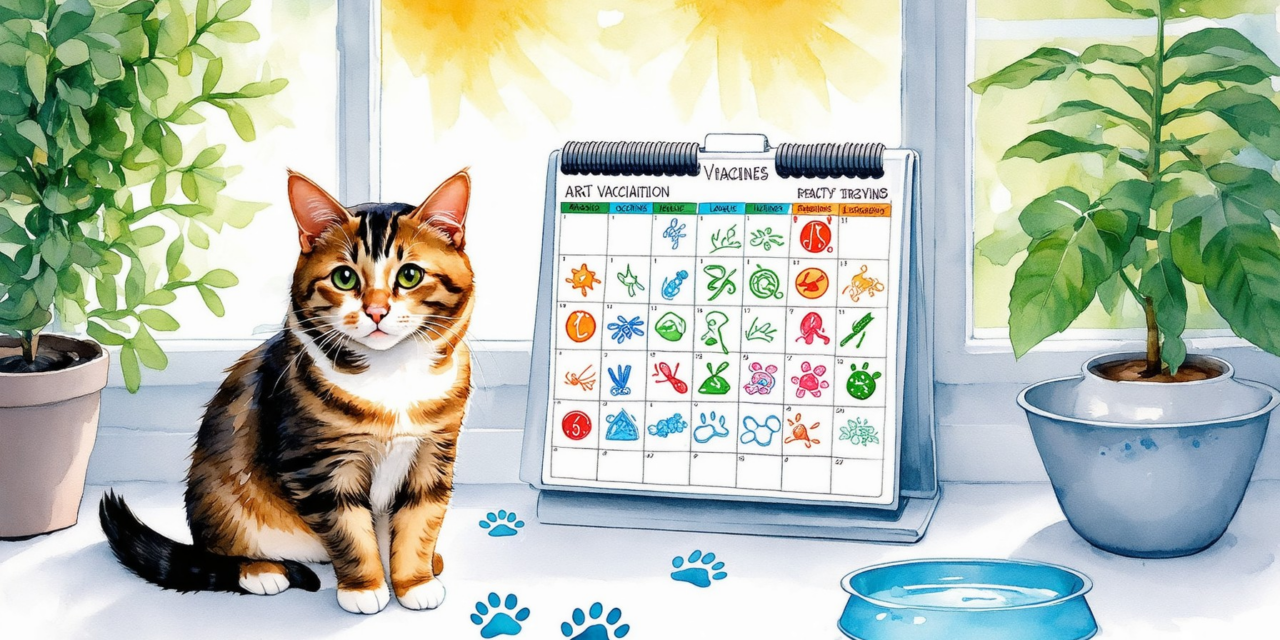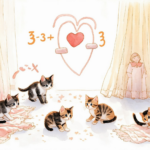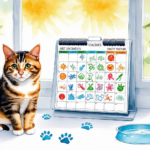Key Takeaways
- Understanding cat vaccines is vital for maintaining your feline’s health, ensuring protection against serious diseases.
- Core vaccines, including Rabies and FVRCP, are essential for all cats, while non-core vaccines depend on lifestyle risks.
- The 3:2:1 rule is crucial for monitoring potential vaccine side effects and ensuring timely veterinary intervention.
- The 4-in-1 vaccine simplifies the vaccination process by offering comprehensive protection against multiple diseases in one shot.
- Indoor cats still need vaccinations to protect against diseases they could encounter through exposure to other animals or environments.
- Regular veterinary check-ups and a tailored cat vaccines schedule are key to keeping your cat healthy and up-to-date on vaccinations.
- Consider affordable options for vaccinations at local clinics like Petco and Tractor Supply to manage costs effectively.
As a responsible cat owner, understanding cat vaccines is crucial for ensuring your feline friend’s health and well-being. In this comprehensive guide, we will delve into essential insights on feline vaccines, including the vital distinctions between core and non-core vaccines, and the significance of adhering to a proper vaccination schedule. You will also learn about the 3:2:1 rule that can help you navigate your cat’s vaccination timeline effectively. Additionally, we will explore the benefits of the 4 in 1 vaccine for cats, address common misconceptions regarding indoor cat vaccinations, and discuss the pros and cons of at-home vaccination. Furthermore, we will provide a detailed overview of the cat vaccines schedule, associated costs, and affordable options available near you, including resources like Tractor Supply and Petco. By the end of this article, you will be equipped with the knowledge needed to make informed decisions about your cat’s health and vaccination needs.
Understanding Core and Non-Core Vaccines
Cats require a series of vaccinations to protect them from various infectious diseases. These vaccinations are categorized into core and non-core vaccines based on the cat’s lifestyle, health status, and risk factors.
Core Vaccines
- Feline Viral Rhinotracheitis (FVR): Caused by feline herpesvirus, this vaccine helps prevent respiratory infections.
- Calicivirus (FCV): Another respiratory virus, the FCV vaccine is crucial for preventing severe oral disease and respiratory issues.
- Panleukopenia (FPV): This vaccine protects against feline parvovirus, which can be fatal, especially in kittens.
- Rabies: A critical vaccine required by law in many areas, it protects against the rabies virus, which is transmissible to humans.
Non-Core Vaccines
- Feline Leukemia Virus (FeLV): Recommended for cats that go outdoors or are at risk of exposure to infected cats.
- Feline Immunodeficiency Virus (FIV): This vaccine may be considered for cats at high risk of exposure to FIV-positive cats.
- Chlamydia Psittaci: Recommended for cats in multi-cat environments where the disease is prevalent.
Vaccination schedules are essential for ensuring your cat’s health. Kittens should receive their first vaccinations at 6-8 weeks of age, followed by boosters every 3-4 weeks until they are about 16 weeks old. Adult cats should receive booster shots annually or every three years, depending on the vaccine type and veterinary recommendations. It is essential to consult with a veterinarian to tailor the vaccination schedule to your cat’s specific needs and lifestyle. Regular veterinary check-ups can also help monitor your cat’s health and ensure they are up-to-date on vaccinations. For more detailed information on pet vaccinations, refer to resources such as the American Veterinary Medical Association.
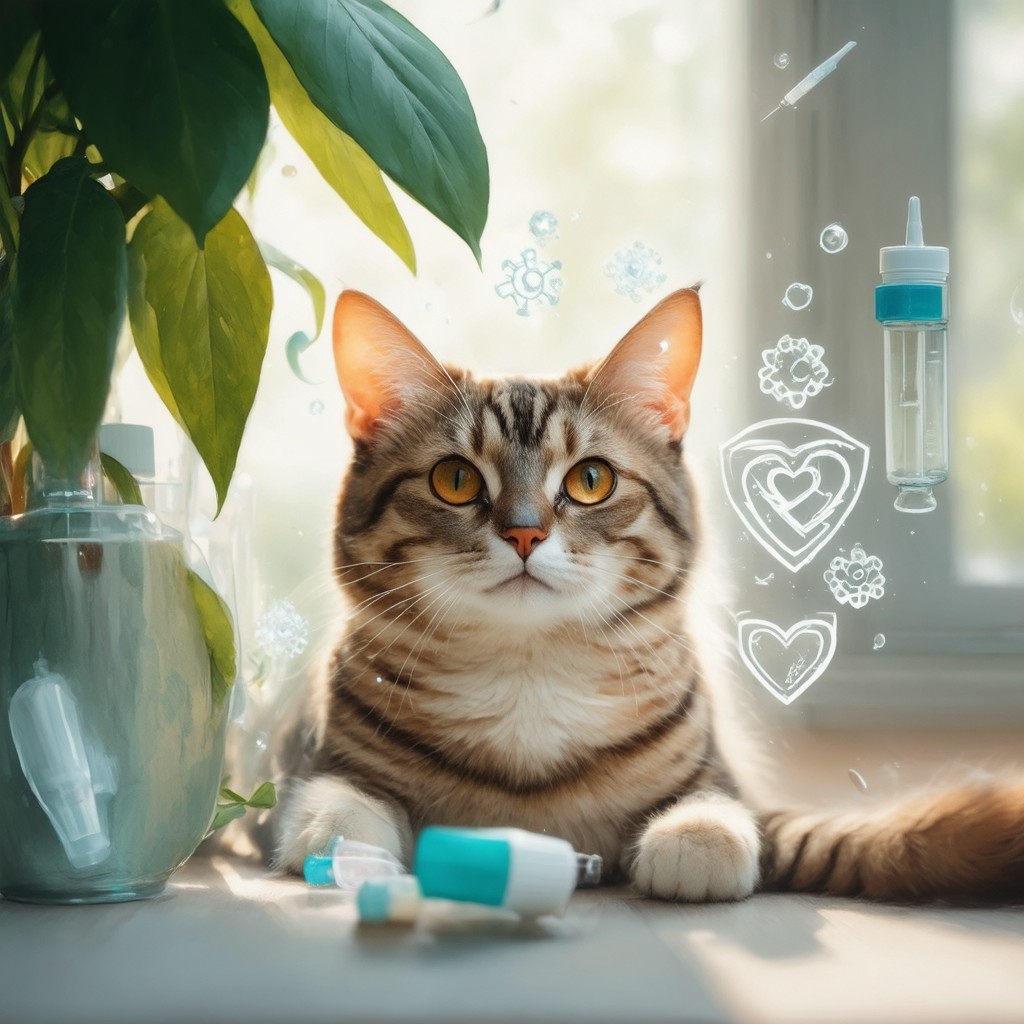
What is the 3:2:1 Rule in Cats?
The 3:2:1 rule in cats is a critical guideline for veterinarians and pet owners to monitor potential injection-site sarcomas, which are rare but aggressive tumors that can develop at the site of vaccinations or injections. This rule states:
- Three Months: If a lump persists for three months or longer after an injection, it is essential to take action. Persistent lumps may indicate a reaction that requires further investigation.
- Two Centimeters: If the lump grows larger than 2 centimeters in diameter, this is a significant warning sign. Tumors of this size warrant immediate veterinary evaluation to determine the appropriate course of action.
- One Month: If the lump continues to increase in size one month after the injection, it is crucial to perform an incisional biopsy. This step is vital for diagnosing the nature of the lump and determining if it is malignant.
According to the American Veterinary Medical Association (AVMA), early detection and intervention are key in managing injection-site sarcomas effectively. Regular monitoring of your cat’s health and any changes at injection sites can lead to better outcomes. For more detailed information on feline health and preventive care, consulting with a veterinarian is recommended.
How the 3:2:1 Rule Affects Cat Vaccination Schedules
Understanding the 3:2:1 rule is essential for establishing a safe vaccination schedule for your cat. By adhering to this guideline, pet owners can ensure that their cats receive the necessary cat vaccines while minimizing the risk of adverse reactions. Regular check-ups with a veterinarian can help monitor any potential side effects from cat vaccinations, ensuring that your feline friend remains healthy and protected.
Additionally, being aware of the 3:2:1 rule can help you make informed decisions about when to schedule your cat’s vaccinations. If you notice any lumps or swelling at the injection site, it’s crucial to consult your veterinarian promptly. This proactive approach not only safeguards your cat’s health but also enhances the effectiveness of the vaccination process.
What is the 4 in 1 vaccine for cats?
The 4-in-1 vaccine for cats, also known as the FVRCCP vaccine, is designed to protect felines from four significant infectious diseases: feline viral rhinotracheitis (FVR), feline calicivirus (FCV), feline panleukopenia (FPV), and feline chlamydia. Vaccination is crucial for maintaining your cat’s health and preventing the spread of these diseases.
Overview of the 4 in 1 Vaccine
The FVRCCP vaccine combines protection against four major feline diseases into a single shot, making it a convenient option for cat owners. Here’s a closer look at each component:
- Feline Viral Rhinotracheitis (FVR): This highly contagious respiratory disease is caused by the feline herpesvirus. Symptoms include sneezing, nasal discharge, and conjunctivitis. Vaccination helps reduce the severity of the disease and its transmission.
- Feline Calicivirus (FCV): Another major contributor to upper respiratory infections in cats, FCV can cause oral ulcers and pneumonia. The vaccine aids in preventing severe outbreaks, especially in multi-cat environments.
- Feline Panleukopenia (FPV): Often referred to as feline distemper, FPV is a viral disease that can be fatal, particularly in young kittens. It affects the cat’s immune system and gastrointestinal tract. Vaccination is crucial for prevention.
- Feline Chlamydia: This bacterium is responsible for conjunctivitis and respiratory issues in cats. While not as severe as the viral infections, it can lead to secondary infections if left untreated. The vaccine helps mitigate these risks.
Regular vaccination schedules typically begin at 6-8 weeks of age, with boosters administered annually or as recommended by a veterinarian. It is essential to consult with a veterinary professional to tailor a vaccination plan that suits your cat’s specific health needs.
Benefits of the 4 in 1 Vaccine for Cats
The 4-in-1 vaccine offers several advantages for cat owners:
- Comprehensive Protection: By combining multiple vaccines into one, it simplifies the vaccination process and ensures your cat is protected against several diseases at once.
- Cost-Effective: Opting for a combined vaccine can often be more affordable than purchasing individual vaccines separately. Many clinics, including PetMD, offer competitive pricing for feline vaccines.
- Reduced Stress for Cats: Fewer injections mean less stress for your feline friend, making the experience more manageable for both you and your pet.
- Prevention of Outbreaks: Keeping your cat vaccinated helps prevent outbreaks of contagious diseases, especially in multi-cat households or shelters.
For more information on the importance of feline vaccines, consider visiting the American Veterinary Medical Association for guidelines and recommendations.
Do Indoor Cats Really Need Vaccines?
Indoor cats do need vaccines for several important reasons:
- Rabies: Rabies is a fatal viral disease that can affect all cats, including those that are strictly indoors. Many states mandate rabies vaccinations for cats to protect public health and prevent the spread of this disease. According to the Centers for Disease Control and Prevention (CDC), rabies is nearly always fatal once symptoms appear, making vaccination crucial.
- Feline Distemper (FVRCP): This combination vaccine protects against three serious diseases: Feline Viral Rhinotracheitis (FHV-1), Calicivirus, and Panleukopenia. These viruses can be transmitted through contact with infected cats or contaminated objects (fomites). The American Association of Feline Practitioners (AAFP) emphasizes that even indoor cats can be at risk, especially if they come into contact with other cats or their environments.
- Potential Exposures: Indoor cats may have lower exposure risks, but they are not completely safe. Accidental escapes, visits to boarding facilities, or interactions with other cats through shared resources like litter boxes can expose them to infectious diseases. The AAFP recommends vaccinations to mitigate these risks.
- Feline Leukemia (FeLV): While primarily affecting outdoor cats, FeLV can also pose a risk to indoor cats that may interact with infected cats. Vaccination is advised for any cat that may have potential exposure.
- Feline Immunodeficiency Virus (FIV): Similar to FeLV, FIV is typically recommended for cats that may come into contact with other cats. Indoor cats should be vaccinated if there is any chance of exposure.
- Vaccination Schedule: Kittens generally begin their vaccination series at 8-10 weeks of age, receiving booster shots every 3-4 weeks until they are 4 months old. Adult cats typically receive core vaccinations every three years, but this can vary based on individual health and risk factors. Regular veterinary check-ups are essential to assess vaccination needs and overall health.
- Health Monitoring: Even if your cat remains indoors, annual veterinary visits are vital for monitoring health, evaluating vaccination status, and addressing any emerging health concerns. The benefits of vaccination, including protection against serious diseases, significantly outweigh the potential risks associated with vaccines.
In conclusion, vaccinating indoor cats is essential for their health and well-being. It protects them from serious diseases and ensures they remain healthy companions. For more detailed guidance, consult with your veterinarian to tailor a vaccination plan that suits your cat’s specific needs.
Common Misconceptions About Indoor Cat Vaccination
Many pet owners believe that indoor cats are safe from diseases and therefore do not require vaccinations. However, this is a misconception that can jeopardize their health. Here are some common myths:
- Myth 1: Indoor cats are not at risk of disease.
Reality: Indoor cats can still be exposed to infectious diseases through various means, such as visitors, shared spaces, or even through open windows and doors. - Myth 2: Vaccinations are only for outdoor cats.
Reality: Vaccinations protect all cats, regardless of their living environment, from serious and potentially fatal diseases. - Myth 3: Vaccines are unnecessary after a certain age.
Reality: Regular vaccinations are crucial throughout a cat’s life to maintain immunity against diseases.
Understanding these misconceptions can help ensure that indoor cats receive the necessary vaccinations to stay healthy. For more information on cat vaccines, consider exploring resources like PetMD or consult your veterinarian.
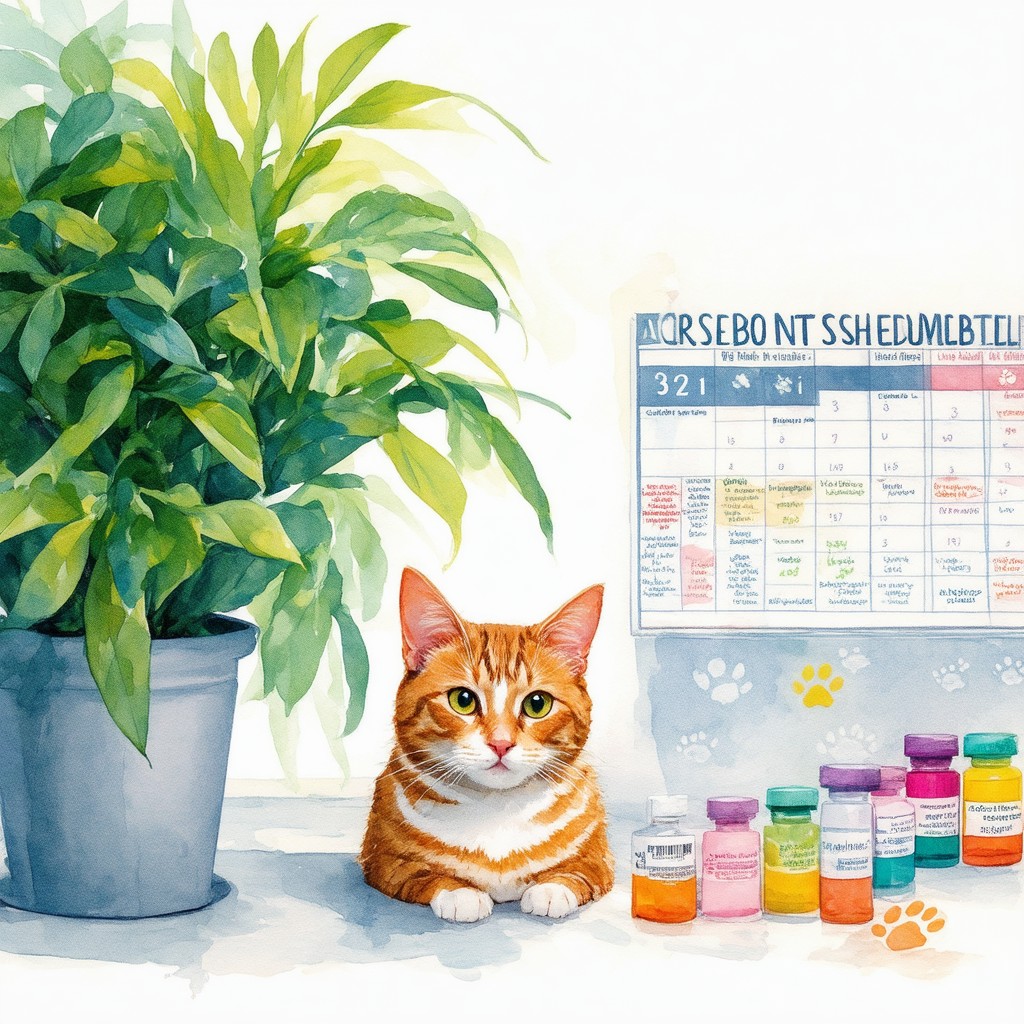
How Often Do Cats Need Deworming?
Understanding the deworming schedule for cats is crucial for maintaining their overall health. Regular deworming helps prevent infestations that can lead to serious health issues. The frequency of deworming can vary based on several factors, including the cat’s age, lifestyle, and health status.
Understanding the Deworming Schedule for Cats
Kittens typically require deworming every two weeks starting at two weeks of age until they reach eight weeks. After that, adult cats should be dewormed at least once a year, although more frequent treatments may be necessary for cats that go outdoors or have exposure to other animals. It’s essential to consult with your veterinarian to establish a personalized deworming schedule based on your cat’s specific needs.
Signs That Your Cat May Need Deworming
Recognizing the signs that your cat may need deworming is vital for timely intervention. Common symptoms include:
- Weight loss despite a good appetite
- Visible worms in feces or around the anus
- Vomiting or diarrhea
- Abdominal bloating or discomfort
- Changes in behavior, such as lethargy or irritability
If you notice any of these signs, it’s important to consult your veterinarian for a proper diagnosis and treatment plan. Regular check-ups can help ensure your cat remains healthy and free from parasites.
For more information on kitten vaccinations and health, visit kitten vaccines.
Cat Vaccines Schedule
Establishing a proper cat vaccines schedule is essential for maintaining your feline’s health. Vaccinations protect against various diseases, ensuring your cat remains healthy and happy. The schedule typically varies based on the cat’s age, health status, and lifestyle. Here’s a detailed look at the recommended vaccination schedule for cats.
Recommended Cat Vaccination Schedule
For kittens, the vaccination schedule usually begins at 6 to 8 weeks of age. The following is a general guideline:
- 6-8 weeks: First dose of feline vaccines (FVRCPC).
- 10-12 weeks: Second dose of FVRCPC and first rabies vaccine.
- 14-16 weeks: Third dose of FVRCPC and second rabies vaccine.
- 1 year: Booster shots for FVRCPC and rabies.
- Every 1-3 years: Depending on the vaccine type, boosters are required.
Adult cats should receive annual check-ups to assess their vaccination needs. It’s important to consult with your veterinarian to tailor the schedule based on your cat’s specific health requirements and lifestyle. For example, indoor cats may have different vaccination needs compared to outdoor cats.
Factors Influencing Cat Vaccination Timing
Several factors can influence the timing of your cat’s vaccinations:
- Age: Kittens require a series of vaccinations to build immunity.
- Health Status: Cats with underlying health issues may need a modified vaccination schedule.
- Lifestyle: Outdoor cats are at higher risk for certain diseases and may need more frequent vaccinations.
- Local Regulations: Some areas have specific vaccination requirements, especially for rabies.
Understanding these factors can help ensure your cat receives the appropriate vaccinations at the right times. Regular consultations with your veterinarian will provide the best guidance for your cat’s health needs.
Cat Vaccines Cost
Understanding the cost of cat vaccines is crucial for pet owners looking to maintain their feline’s health without breaking the bank. The price of cat vaccinations can vary significantly based on several factors, including the type of vaccine, the veterinary clinic, and geographical location. Generally, the cost for core vaccines, such as the FVRCPC (Feline Viral Rhinotracheitis, Calicivirus, Panleukopenia, and Chlamydia), ranges from $15 to $50 per shot. Non-core vaccines, which may be recommended based on lifestyle or risk factors, can also add to the overall expense.
For those seeking affordable cat vaccines, options like Tractor Supply’s pet clinic often provide low-cost vaccinations, making it easier for pet owners to keep their cats up to date on necessary shots. Additionally, clinics like Petco offer competitive pricing for vaccinations, which can be beneficial for budget-conscious pet owners. It’s essential to compare prices and services to find the best fit for your needs.
Breakdown of Cat Vaccination Costs
The breakdown of cat vaccination costs typically includes:
- Core Vaccines: These include the FVRCPC and rabies vaccines, which are essential for all cats. Expect to pay between $30 and $100 for a complete series.
- Non-Core Vaccines: Depending on your cat’s lifestyle, vaccines for feline leukemia or Bordetella may be recommended, costing an additional $20 to $50 each.
- Examination Fees: Many clinics charge a consultation fee, which can range from $30 to $75, especially if it’s the first visit.
- Follow-Up Visits: Kittens typically require multiple vaccinations, leading to additional costs throughout their first year.
For those looking for low-cost pet vaccines, it’s advisable to check local veterinary clinics, as many offer package deals that can significantly reduce the overall cost.
Affordable Options for Cat Vaccines Near You
Finding affordable options for cat vaccines is easier than ever. Many local veterinary clinics and pet stores, such as Tractor Supply and Petco, provide low-cost vaccination clinics. These clinics often run special events or offer discounts for multiple pets, making it a great opportunity for pet owners to save money. Additionally, some animal welfare organizations may offer free or low-cost vaccination days, which can be an excellent resource for those on a tight budget.
When searching for cat vaccines near me, consider checking with local shelters or community health events that may provide vaccinations at reduced rates. Always ensure that the vaccines are administered by a licensed veterinarian to guarantee safety and efficacy.

